Within a couple months of my 2012 move back to Washington from California, I had filed the paperwork for my first suppressor: a Liberty Suppressors Mystic. Since then I had it upgraded to Mystic X specs, then about a year ago I brought home my Liberty Cosmic as I “needed” a .45 can. The much more compact Centurion — effectively a cut down Mystic X — had been popping onto my radar repeatedly and now, thanks to Silencer Shop, I’ve had a chance to test it out.
That’s my Mystic X on the left, and the Centurion on the right (both “aimed” to the right). As you can see, they’re monocore designs with a high grade stainless steel baffle core inside of a titanium tube. The Centurion is shorter than the Mystic (and the Cosmic) by nearly three inches — 8″ vs. 5.3″. Weighing in at 7.9 ounces, it’s lighter than the Mystic X by 2.6.
Throwing the Cosmic into the mix is when things really get interesting. While it’s the same length as the Mystic X — in fact, either tube works on either baffle core — it uses a new baffle design that has fewer baffles farther apart. Fewer than half as many baffles, actually. It’s no surprise that this makes the Cosmic lighter than the Mystic (9.5 ounces vs. 10.5 ounces).
What I didn’t expect is that it’s just as quiet. Considering the reduction in baffles and the .45 caliber-compatible bore diameter, I assumed it would be louder on 9mm and some other, small calibers than the Mystic X. Not only is that not the case, I feel like the Cosmic is often even quieter.
https://www.youtube.com/watch?v=6lIUicEt3pc
Were I buying a first suppressor all over again, it would be a Cosmic and I’d never end up owning a Mystic X. Frankly, I don’t really understand the purpose of the Mystic X anymore other than the newest version of it will handle more centerfire rifle rounds than the Cosmic will.
But, doing it all over again, I’d buy a Cosmic, a rimfire can, and a .30 caliber rifle can and that would cover the bases pretty darn well.
Full disclosure: I borrowed the Centurion because, as mentioned, I see my Cosmic and Mystic X as redundant. I’ve been thinking about having Liberty cut down the length of my Mystic tube — the serialized part — so it fits a Centurion baffle core. However, a couple folks had told me that the Centurion is really loud and “not very good,” so I lost interest. As you’d expect, I entered into this testing with low expectations.
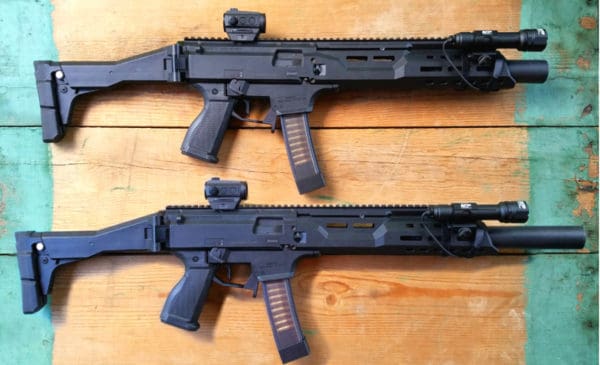
Why the Centurion? Perhaps the photo above explains it best. The Mystic/Cosmic are long suppressors. Though they’re light in weight and extremely, market-leading quiet on an absolutely absurd number of calibers, they’re long. On my CZ Scorpion SBR, which is always suppressed and is my home defense and bug-out weapon of choice, it sticks way out the front and it’s quieter than it needs to be.
Yeah, “quieter than it needs to be” is a weird concept to anyone new to the suppressor game. It seems like the longer you’re around them and the more suppressed shooting you do, the more you gravitate away from chasing dB reduction numbers and towards the only sound volume requirement being “hearing safe.” You end up looking for the smallest, lightest suppressor that’ll provide sub-140 dB levels.
Mystic/Cosmic on the Scorpion. That’s the factory 7.75-inch Scorpion pistol barrel underneath the carbine handguard, as reviewed here.
And with the Centurion installed instead. Without a doubt, the shorter can looks better. In fact, I could cut another inch off this length by using Liberty’s Low Profile Fixed Barrel Adapter instead of the longer mount I already own. That, I’d have to say, would be absolutely perfect on this gun.
I’ve seen this setup with even shorter 9mm suppressors that end up flush with the end of the handguard or even recessed down into it slightly, but that presents a real hassle for tightening or removing it. The Centurion here, especially with the low pro mount, seems to strike the right balance.
It also looks great on a pistol. More like the image I have in my mind — probably thanks to Hollywood — of a suppressed pistol, rather than the gangly, far-longer-than-the-actual-pistol look that describes the typical, real-life setup.
From behind the gun while actually shooting, the feel of the Centurion isn’t actually very different from that of the Cosmic. While it’s almost three inches shorter, it’s only an ounce-and-a-half lighter and it isn’t easy to tell which is which by feel unless you’re really waving the gun around. In fact, I’m not sure I could reliably pass a blind taste test. Add another ounce for the Mystic X, though, and I think I can reliably tell it apart from the Centurion by feel.
Unquestionably, the shorter, lighter suppressor feels the best. It adds the least inertia to the muzzle, though its mass still reduces recoil and tames caffeine-induced shakes.
Ultimately, sound suppression is where the rubber meets the road, though. I’m glad to report I was surprised and very pleased by the Centurion’s performance.
On the downside, first round pop — a suppressor’s tendency, due to oxygen inside of it, to be louder on the first shot than subsequent shots — is more pronounced with the Centurion than with the Mystic X or Cosmic. Even in the video above, this is extremely obvious.
Liberty’s testing numbers show a 21.2 dB reduction on that first shot, Silencer Shop’s numbers a 20.3 dB reduction. In both cases, it brought the volume level to the side of the 9mm pistol’s muzzle down to a hearing safe 139.2 dB and 138.9 dB figure, respectively. Back at the shooter’s ear, it would be quite a bit quieter.
On some firearms, we noticed a second shot that was obviously quieter than the first but still louder than subsequent shots, and on other guns that first round pop truly seemed relegated to the first shot. At any rate, once that oxygen is depleted the Centurion’s noise reduction is more like 24.6 dB from Liberty’s Testing and 24.1 dB from Silencer Shop’s. Approximate dB numbers are in the 135 range.
From behind the CZ Scorpion as well as behind the Rex Zero 1T (seen in the pistol photos above), CZ 75 B Ω Suppressor-Ready, and GLOCK 19, the difference between the Centurion, Mystic X, and Cosmic was minor. Chris and I could just tell the difference in volume level between the Rex’s and CZ’s actions, and the sound difference between these three Liberty cans was equivalently minor. Most indication that the Centurion was louder seemed to come as sound reflection from downrange instead of gunshot volume at the shooter’s ear.
For those concerned with first round pop, shooting the suppressor “wet” (adding a liquid or gel ablative inside the can) will eliminate it. In fact, it’s good for another ~8 dB of volume reduction on the Centurion. My recommendation is a small amount of ultrasound gel (such as this stuff) inside a few of the baffles. It’s cheap, totally safe, burns off cleanly, cleans up easily elsewhere, is just thick enough not to run out of the suppressor, and works great.
Then again, even on a short pistol barrel the Centurion is hearing safe right off the bat when shot dry. Which means it makes the cut. It looks to me like Liberty carefully experimented with this suppressor’s length until they could get it as short as physically possible while still metering under 140 dB. And again, that’s using the standard one meter off the side of the muzzle measuring protocol, instead of metering at the shooter’s ear where it’s typically six to 10 dB quieter.
Above are the calibers the Cosmic is rated for (click to enlarge).
Those are the Mystic X’s compatible calibers.
Obviously, this is a huge reason I believe either of these two suppressors makes an absolutely ideal first can. I’ve shot my Cosmic on everything from .22 LR to .458 SOCOM. It’s awesome to know that, with some centerfire rifle caliber exceptions, if it’ll fit through the bore the can will handle it. For instance, I knew it would be fine on .460 Rowland (fires a .45 bullet, despite its name), which suppressed great by the way, even though it isn’t on Liberty’s list above. It’s insane how universal these suppressors are.
And that brings us to the one real comparative downside to the Centurion. It’s rated for rimfire calibers, 9mm of course, and 300 Blackout (on which it’s also good for sub-140 dB numbers). I’m sure it would handle lots of other 300 BLK-or-weaker calibers, too, but technically Liberty lists only the aforementioned ones.
After shooting the Liberty Centurion on a bunch of different firearms over the last month, I’ve made up my mind. I’ll be asking Liberty Suppressors if they’re willing (and legally able) to chop down my Mystic X and turn it into a Centurion. Hearing safe while as short as possible and a few ounces lighter? What’s not to like.
Specifications: Liberty Suppressors Centurion
Caliber: 9X19, 300 BLK, 22LR
Length: 5.3″ Silencer Only / 6.5” Including Booster
Diameter: 1.375”
Material: Titanium tube / Stainless steel core
Weight: 7.9 oz Suppressor Only / 12.5 oz with booster installed.
Approx. dB Overall: 136.6 dB (including First Round Pop)
Approx. dB Reduction: 24 dB (32 dB wet)
Mounting Type: 1/2×28 Booster
Finish: C-Series Cerakote
MSRP: $835 (includes 1/2×28 booster). Approximately $639 via Silencer Shop.
Ratings (out of five stars):
Sound * * * *
The Centurion produces a pleasant tone and is hearing safe on 9mm and 300 BLK, while coming in at a shorter length and lighter weight than most 9mm suppressors.
Form Factor * * * *
There are a couple of shorter 9mm suppressors on the market, and a couple that are modular and can be switched between a long and short configuration. But the Centurion strikes that perfect balance between suppression, length, and weight, while still being “overbuilt” by enough to handle 300 Blackout.
Utility * * * *
So it isn’t capable of suppressing anywhere near the list of calibers that the Cosmic and Mystic X are — heck, no other suppressors are — but it still uses the same mounts as those other two Liberty pistol cans. This opens up a whole world of firearms compatibility, with fixed mounts and boosters in every conceivable thread pitch (plus QD options like 3-lug mounts). It’s an extremely useful suppressor.
Overall * * * *
I’d still recommend the Cosmic as a first suppressor. It’s light, extremely quiet, and capable of suppressor a ridiculous number of calibers. For a second pistol can, though, I like the idea of going as small as possible while retaining a hearing safe rating, and the Centurion delivers.

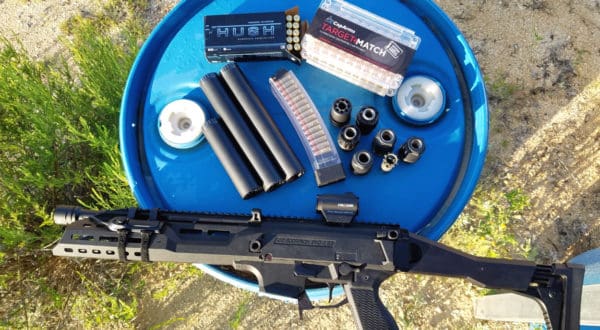

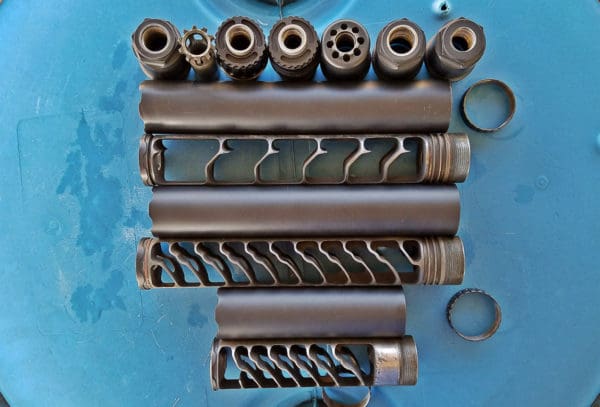
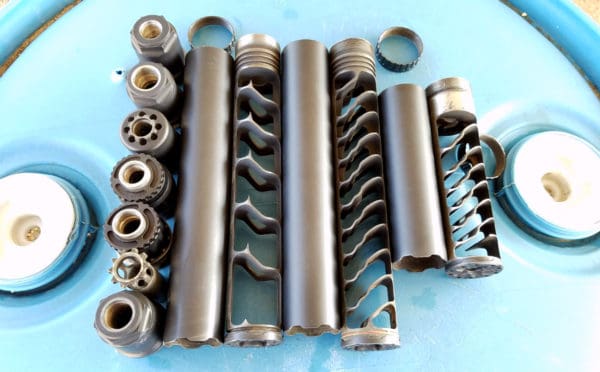
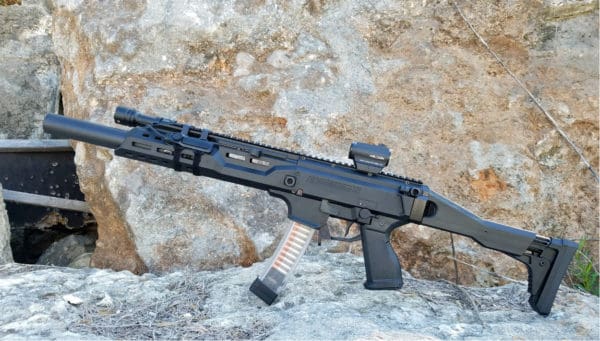
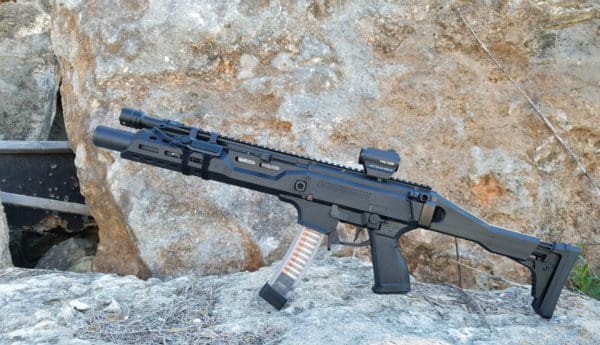
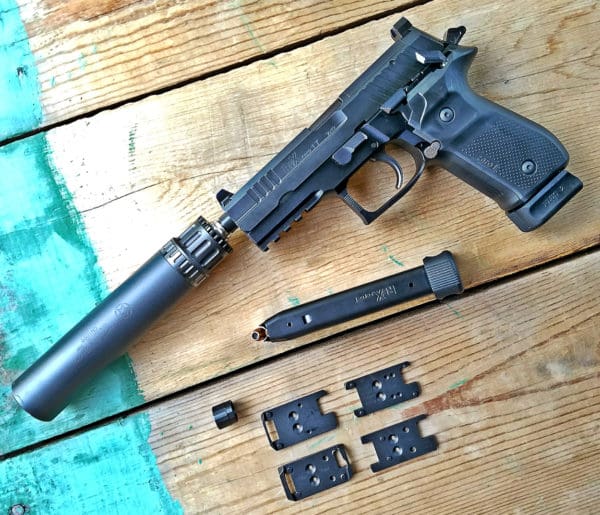
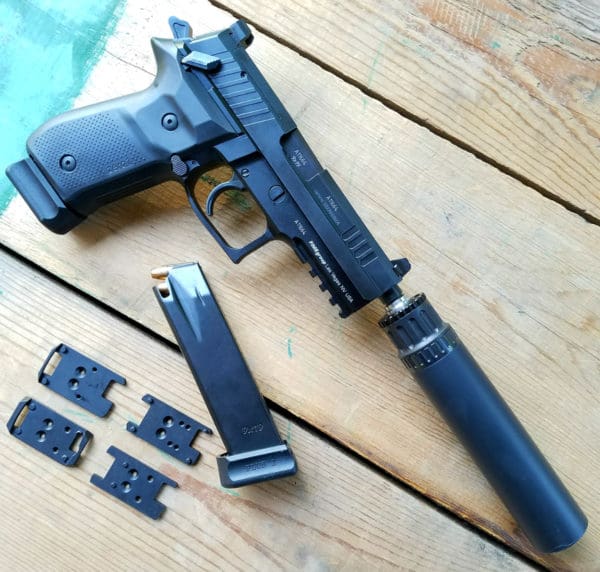



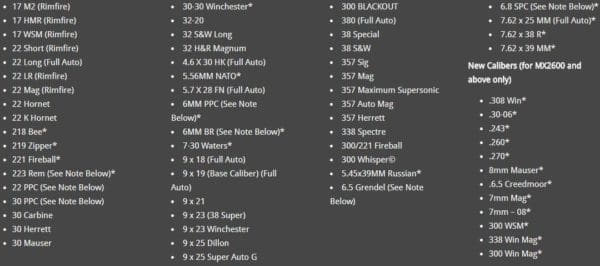
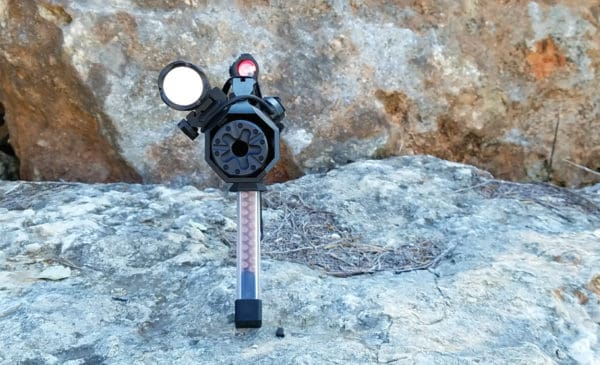



I for one would be interested in more suppressor reviews. I know its just my opinion, but a review of a new pistol or AR is about as interesting at this point as watching paint dry…unless its radically different than all the guns I’ve owned or fired in the past, which are like the guns most other shooters have owned or fired…a suppressor on the other hand is not something I’ve been playing with for decades.
So, more suppressor reviews please.
Sorry … You lost me when you started in on the “this is as quiet as that but redundent with that other thing which I wouldn’t have bought but..” and wound up having no idea whether we were talking about mystical centurions – Roman or Cylon – or cutting down which can why, or what.
Then, trying again, TL;DR.
Please, three reviews with light linkage between them for reference. Much easier to keep it straight that way. And easier to search for later.
dB numbers still LOUD…even with a can…definitely not SILENT …like opponents would like you to believe
Even though I know the camera is on a tripod, it still gives me the willies to look into the business end of a gat.
Gat?
Are you from da ‘hood?
Gun…firearm…barrel…muzzle
Um, yup! Definitely a remote camera setup and these certainly aren’t all cell phone photos like every photo you’ve seen from me since the beginning of 2017 😛
A request for TTAG’s resident suppresssor reviewer –
How about an ablative gel ‘shoot-out’?
The stuff you linked is 11 bucks for 3 tubes (25.5 oz.) while dirt cheap cable-pull jell is as cheap as 35 bucks for 4 gallons…
I’m used to seeing cable pulling gel for more like $20 ish per gallon, which you can also get ultrasound gel for if you buy in bulk. However, a gallon is A LOT and 4 gallons would last you a lifetime. Most suppressor manufacturers suggest using like like 5 ml (less than 0.2 oz) of ablative in the can. That 3-pack of tubes for ten bucks that I linked is like 150 uses.
I think it burns off cleaner, leaves less residue, doesn’t smell, is obviously skin-safe, wipes right off hands and doesn’t leave residue, etc. But it isn’t available at the local hardware store, whereas wire pulling gel often is.
All valid points…
BTW rounding up the five most popular ablative mediums and a dB meter and doing a comparo is a great idea! Determining how clean each one is will be tricky, since returning baffles to new condition after each medium is tested isn’t really practical. But I’m sure we can figure out some way to estimate how well they each burn off and how much or little they leave behind.
“But I’m sure we can figure out some way to estimate how well they each burn off and how much or little they leave behind.”
Easy, peasy.
Use an old analytical lab trick, the use of the tare button.
Weigh the can dry, then push the ‘tare’ (Zero) button.
Add jell to the can, and then weigh again. Record the results.
That’s how many grams of the jell are in it.
Shoot the can. Weigh again, note the difference. Calculate what percentage of 100 percent of the jell remains.
As Breaking Bad’s character of Jessie Pinkman would say :
Science!
https://www.youtube.com/watch?v=eQR1r1KTjaE
“But it isn’t available at the local hardware store, whereas wire pulling gel often is.”
Again, easy.
Amazon Prime. Or eBay. Free shipping with Prime…
(Of course, your local UPS driver may start wondering what kind of kink you and the wife are into when they start dropping off *gallons* of medical ‘lube’ at your place… 😉 )
Comments are closed.